
Just because you’ve hiked a trail, doesn’t mean you truly know it.
Friends ask me for trail recommendations a lot, which I love. Nothing makes me happier than detailing options and then hearing how much they enjoyed their adventure. But occasionally, I raise an eyebrow when someone tells me, “Oh, I’ve done that one.”
Really?
I want to respond, “But have you done it today?” No trail is the same from one day to the next, let alone when weeks, months, or years pass. We just need take notice.
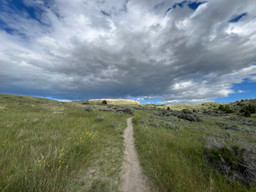
During a recent visit to the Headwaters Heritage Museum in Three Forks for my current writing project, I picked up a book, A View from the Trail, by Jim Phillips. From what I understand, Phillips, who has now passed, was a local gentleman who wrote a series of observations from his daily walks along the trail near his home. In each short chapter, he paints a picture of the landscape, weather, wildlife, and the people he meets along the way. Far from a literary masterpiece, his engaging words still make me feel like I’m walking alongside him.
Reading his narrative encourages me to pay closer attention to my daily walk. Zeke and I cover the same two-mile route practically every evening. Seemingly, I could do this with my eyes closed, but with more focused attention, it’s a new trail every day.
One of the features I notice the most is the grasses and flowers. Living on the prairie, even if it is succumbing to the encroachment of new houses, the season is measured by the plants. Blades of grass begin to green in April, and a few phlox make an appearance. By May, the dandelions show their bright yellow faces, along with native prairie flowers—locoweed, scarlet globe mallow, and many others—spring up daily.

Now the grasses are mature, their seed heads nodding heavily in summer breezes, making it feel like a convection oven when the temperature hovers near the century mark. Liatris is blooming, along with the knapweed, an invasive plant that takes over pastureland yet makes a fabulous honey.
Covering a trail we’ve already hiked offers us an opportunity to look at it with different eyes. Look at the sky. Are there clouds today? What kind? Is the moon rising already?
The birds also add to the palette of activity. As the weather warms in the spring, I count the days until I hear the first Western meadowlark so I can announce that spring has truly arrived. Owls sometimes nest in trees near a small pond, and magpies raise a ruckus anytime we step near them. By mid-summer, the killdeer frequently feign injury as we stroll past their hidden nests, and it’s always a treat to catch a glimpse of the tiny killdeer, adorable fuzzy versions of the adults that skitter away at our approach.

At different times of the year, pheasants chortle from the grass, and more than once, we’ve startled at the flush of Hungarian partridge, what we call Huns, or the grouse that flies up at the last minute in a seeming panic. That quickly snaps me out of complacency when my mind wanders too much.
Despite living near long-established homes and new ones springing up in the adjacent upper-end development, the area is populated with wildlife. During one walk, I counted 38 whitetail deer. Of course, they are why we must fence any plant, tree, or shrub that we don’t want destroyed.
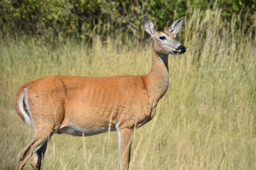
The surrounding fields are teaming with ground squirrels, the bottom rung on the food chain in these parts. Bald eagles and hawks swoop down from the sky for an easy meal, and badgers live among the elaborate tunnel systems to have their food close at hand. The evenings are the best time to see the badgers, who appear to be on a mission and do not care if anyone is in their way.
This year there is also an abundance of cottontails, much to Zeke’s delight. The rabbits are often stationed near the opening of a culvert, and as we approach, he crouches into the border collie-type posture, walking ever closer, step by step, in anticipation of a chase that won’t happen. “Leave it,” I have to remind him, and more often than not, the bunny holds tight as we pass a half-dozen feet from it.
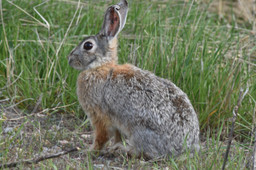
The other day, I had the treat of seeing a jackrabbit, a somewhat rare sighting for reasons that aren’t entirely understood. Still in its tan and gray summer attire, it leaped from its crouched position and dashed across a yard into the taller grass of a pasture. I was just happy to catch a glimpse.
We always remember the rattlesnakes, an equal member of the neighborhood ecosystem, that offer a sense of danger to a simple evening stroll. I totally admit to jumping over a foot in the air the other evening when I noticed a snake in the road, but within seconds, I realized it was a dead and slightly mangled bull snake. While bull snakes are not a threat, seeing any snake-like shape quickly makes me take notice, readying to move out of the way – even if that’s straight up – if necessary. It’s yet another reminder that walking a trail, even if it’s the same one day after day, is always a new experience.
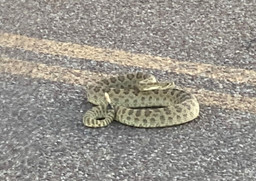
Covering a trail we’ve already hiked offers us an opportunity to look at it with different eyes. Look at the sky. Are there clouds today? What kind? Is the moon rising already? From which direction is the wind blowing, and how does it feel? Is it a cold gust from the north, or is the warm “snow eater” Chinook bringing a welcomed change? Notice how our wildlife friends are faring. Are the whitetail does thin this year after a season of drought? Do they still have all of their fawns? And when did the chirping call of ground squirrels grow quiet later in the summer?
Every day is a brand new experience. You have to open your eyes to appreciate it.
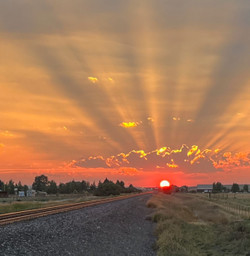
All photos courtesy of Amy Grisak
Article republished with permission of the author
Earth.fm is a completely free streaming service of 1000+ nature sounds from around the world, offering natural soundscapes and guided meditations for people who wish to listen to nature, relax, and become more connected. Launched in 2022, Earth.fm is a non-profit and a 1% for the Planet Environmental Partner.
Check out our recordings of nature ambience from sound recordists and artists spanning the globe, our thematic playlists of immersive soundscapes and our Wind Is the Original Radio podcast.
You can join the Earth.fm family by signing up for our newsletter of weekly inspiration for your precious ears, or become a member to enjoy the extra Earth.fm features and goodies and support us on our mission.
Subscription fees contribute to growing our library of authentic nature sounds, research into topics like noise pollution and the connection between nature and mental wellbeing, as well as funding grants that support emerging nature sound recordists from underprivileged communities.

